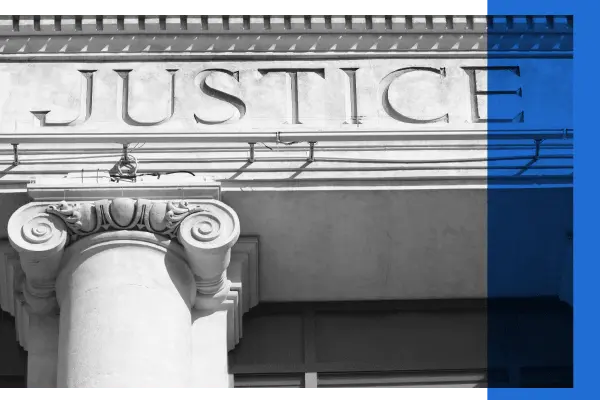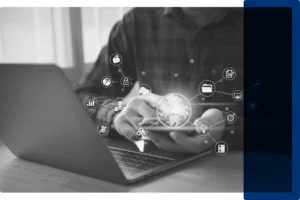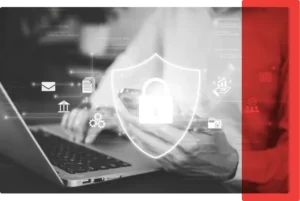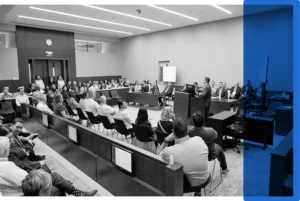
30 Jul
2022
Accessibility in the courts: 32 years on from the Americans with Disabilities Act
Equal access to legal processes and the wider justice system is a fundamental right, granted by the U.S. Constitution and further reinforced by Title II of the Americans with Disabilities Act (ADA). The Act, which became law in 1990, protects people with disabilities from discrimination in State and local government services, programs, and activities, including law enforcement agencies and justice system entities.
Requirements under the Act include the obligation to provide reasonable modifications to policies, practices, and procedures to ensure equal and effective communication can occur with people with disabilities.
Barriers to full access
Yet people who are deaf or hard-of-hearing and people who require visual aids or comprehension assistance face communication barriers that prevent them from fully participating in the judicial process.
The pandemic exacerbated existing issues, according to the National Center for Access to Justice. The organization’s 2021 Justice Index rated state court accessibility from 0 to 100. The result? Forty-four states received a score of less than 50.
Since the pandemic also expedited courts’ adoption of technology, they now have the opportunity to go one step further and use innovations to address longstanding inequities for people with disabilities.
As strong advocates for access to justice, For The Record consistently enhances our solutions to support courts to empower participants in the justice system.
Courts around the world have implemented our courtroom audio and visual technology solutions—devised to maximize clear communication in the physical courtroom and deliver the clearest recordings possible for transcript and digital record accuracy.
AI-powered technology revolutionizes access to justice
As technology continues to advance, artficial intelligence (AI) is set to transform and enhance how justice is accessed in numerous ways. In 2022, real-time speech-to-text transcription—developed specifically for the justice system—will debut in a handful of courts across the country.
It’s unlike anything that’s been seen to date, and it will provide the type of equal access granted by the Constitution and promised by the Americans with Disabilities Act.
Implementation of accessible technology depends on funding
Budget constraints are often cited as reasoning for the limited uptake of accessible technology and the prevailing inequalities in courts across the country.
As the scalability and flexibility of real-time speech-to-text continues to improve, more and more courts are becoming more open to leveraging this innovative technology, and not dismissing due to cost.
Targeted, yet versatile, technology improves access for all
Building on these financial benefits, it is more cost-effective for courts to utilize a multi-purpose, yet tailored, service that addresses a range of requirements at the same time, leading to meaningful engagement from all participants.
This new technology can increase access for people who historically have faced additional barriers, including people who are deaf or hard-of-hearing and people who require visual aids or comprehension assistance. As the text is presented alongside the audio with accurate speaker attribution, participants can be fully engaged with the proceeding and revisit sections if required.
At the same time, it can also boost efficiencies and unlock insights in the court record for judges, attorneys, and court administration.
To name just a few benefits, the real-time speech-to-text solution offers judges instant, searchable text for review or read-back in court. Attorneys can focus on proceedings and strategy instead of taking extensive notes, and court administration can reduce the costs and difficulties associated with hiring a specialist to transcribe legal proceedings—especially given the national supply gap facing stenographers.
Importantly, utilizing multi-purpose tools reduces the isolation felt by people with disability, normalizes the use of assistance tools in everyday settings, and highlights that accessibility can be beneficial for all.
Courts can lead the way in equity and inclusion
The positive impact on someone with a disability is profound when opportunities and resources are made available to support their equal access to, and increase their comfort in, complex environments such as a courthouse or the wider justice system.
While we recognize there is a lot more progress to be made, we think it is an opportune time to reflect on the developments—occurring every day— that contribute towards a more inclusive and accessible justice system.
It is important for all of us to consider how our organizations are impacting people with disabilities in the community we serve.
Contact our team to learn more about increasing accessibility in your courtroom.



